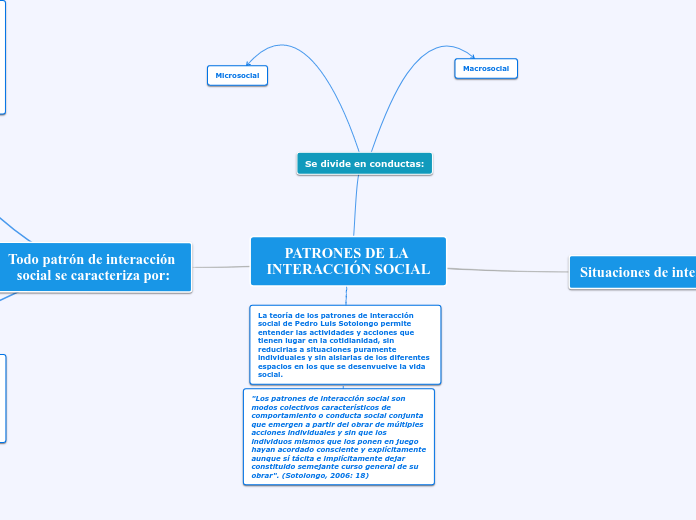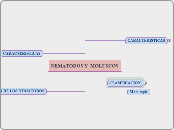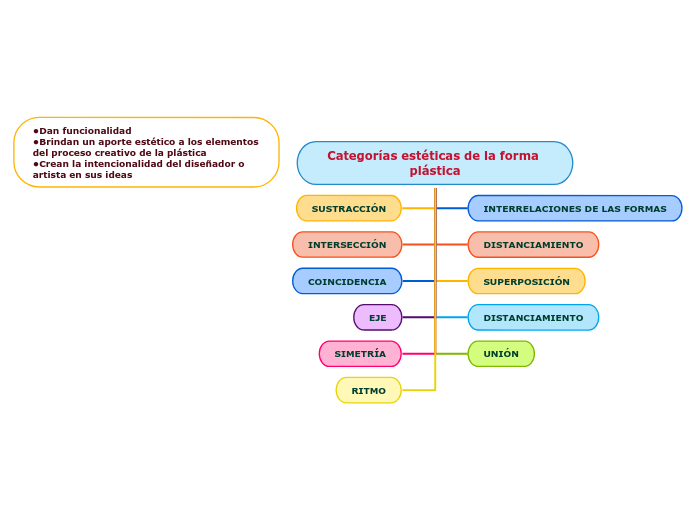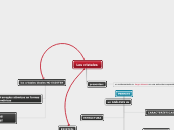o Asimetrías
o Deformidades
o Laceraciones
o Signos de traumatismo
o Anomalías
EXAMEN FISICO DE CABEZA Y CUELLO
The Personal SWOT Analysis will provide insights based on your personality strengths and weaknesses, challenges you see ahead, opportunities present around you now, as well as future favorable circumstances.
CARA
Finally, look at any threats to your career growth. This part accounts for the external factors that could hurt the chances of attaining your goals.
Cejas y Pestañas
sí son completas, si están pobladas y deben observarse las anomalías
Glándulas Parótidas
Se inspeccionarse buscando hipertrofia o dolor a la palpación.
describir simétria, los movimientos, las fascies, cualquier enfermedad o anomalía debe describirse.
Performing this analysis will often provide key information – it can point out what needs to be done and put problems into perspective.
These are sample questions and sample answers, please feel free to add your own questions and answers.
OJOS
Once you have listed out your SWOT - It's now time to evaluate and determine further steps that need to be taken in order to achieve your goals.
There are mainly two methods:
1) Matching
2) Turning negatives into positives
Función visual
Si la luz produce molestia, incomodidad o dolor en la visión se llama Fotofobia
Pupilas
son redondas e iguales, se contraen con la luz y se dilatan en la oscuridad
midriasis (diámetro pupilar aumentado)
miosis (diámetro pupilar disminuido).
Son iguales se llaman isocóricas, si son diferentes anisocóricas
El globo ocular
The other method is converting your weaknesses into strengths or threats into opportunities.
For example: growing a skill set through education, finding a creative way to feature a weakness as a strength, etc.
Cuando uno de los ejes se desvía hablamos de estrabismo
protuido hacia delante, esto se denomina exoftalmia
La conjuntiva pálpebra
buen sitio para apreciar la anemia
Parpados:
La inflamación de los parpados se denomina blefaritis
Cuando el parpado no se puede ocluir, se llama lagoftalmos
La caida del parpado se denomina ptosis palpebral
La inspección permite describir la presencia de edema
La dacriocistitis es la inflamación del saco lagrimal
Se llama orzuelo a una enfermedad inflamatoria
NARIZ
La mucosa nasal normal tiene un color rosado vivo, la enfermedad alérgica la torna
pálida, como carne de pescado lavado.
La enfermedad infecciosa la torna eritematosa con secreciones
Se utiliza rinoscopio
la nariz en silla de montar se relaciona con la sífilis
BOCA
El examen comienza en los labios
La lengua normal esta húmeda rosada y papilada
Patología de la legua; La lengua saburra, macroglosia
Se examinan los dientes, encías, paladar, lengua
Patología de las encías; gingivitis, El ribete de Burton
CUELLO
This is the most important step of all: bringing the plan into action.
Start using your results to track your progress. Set up measurements and milestones and keep working toward them. Step by step, you will get where you want to be, so get started now!
Se debe examinar:
• forma y movimientos.
• ganglios linfáticos.
• glándula tiroides.
• pulsos carotídeos.
• pulso venoso yugular.
You can evaluate your results using the matching method, which means connecting two of the categories to determine a course of action.
Please see a few examples here.
Palpar la posición de la tráquea, inspeccionar Tiroides
Matching weaknesses to threats exposes areas you should work on or situations to avoid, letting you know where to be more defensive as well.
Ganglios linfáticos de la cabeza y el cuello: o Faringitis estreptocócica (cadena anterior)
o Otitis media (cadena posterior)
o Tuberculosis
• Fijarse en cualquier deformidad, asimetría o masa evidente.
• Anomalías visibles
For example matching strengths to opportunities shows you where to be aggressive and take action.
Evaluar la amplitud de movimiento:
• Mirar hacia arriba lo más alto posible (normal: 70° de extensión)
• Tocar el pecho con la barbilla (normal: 80°–90° de flexión)
• Girar la cabeza a la derecha/izquierda tanto como sea posible (normal: 90° de rotación
OREJAS-OIDO
For the opportunities section, look at the external factors you can take advantage of in pursuing a promotion, finding a new job or determining a direction for your career.
Mastoides
Se debe mencionar si las mastoides presentan edema o sensibilidad dolorosa a la palpación.
Conducto Auditivo Externo
Se explora halando la oreja hacia atrás, arriba y afuera. Se describe:
rugosidades, hemorragias o lesiones
el color de la mucosa, la presencia o no de hiperemia
Tímpanos
con el otoscopio se observan, Se exploran y describen cada uno. Evaluar la audición: Si se encuentran anomalías, realizar :
Prueba de Weber
Prueba de Rinne
Forma: es importante ya que hay una gran cantidad de patologías congénitas
Patologías:
cianosis, hemorragias, cicatrices
lesiones, quistes, tofos
Tamaño: normal, agenesia, hipoplasia
'Technology' is not equal to Information Technology. For example, if you are in the soap-making business and you bring machines that speed up the process, you have introduced new technology or a process.
- Is the process you currently follow going to change?
- What changes do you need to make in the current process to improve it?
- How much time will you need to learn the new technology?
Add some questions and answers related to your industry and niche.
Realizar un examen otoscópico para evaluar el canal auditivo interno y la membrana timpánica:
Inspeccionar por presencia de cualquier anormalidad como secreción, enrojecimiento, cerumen, edema o cuerpos extraños.
Función auditiva: La audición a veces puede estar exaltada
Sensibilidad: normal, hiper o hipo sensible.
Levantar suavemente la parte exterior de la oreja.
If you plan on changing your job or investing in your own business:
- Is this the right time to invest in your business?
- Will you get your desired salary if you change your job right now?
- Will you get the desired ROI if you invest right now?
Have you calculated the risk involved?
Add a few questions and answers of your own related to the industry that you work in.
CABELLO
Carácter: liso, ondulado o rizado, natural o artificial, seco o grasoso.
Implantación: normal o fácilmente desprendible
• El crecimiento o la falta de crecimiento del cabello puede indicar ciertas enfermedades
Inspeccionar color, consistencia.
Cantidad: normal, escasa, abundante, alopecia.
• Las características del cabello permiten confirmar o sospechar la presencia de una enfermedad
CUERO CABELLUDO
This part examines the areas which you need to improve and the things that will set you back in your career.
It is really important to be honest when you list out your weaknesses.
Examinar, separando el cabello:
describir la presencia o no de seborrea Cráneo
Ask people around you about your weaknesses - such as the colleague sitting next to you, your sibling or your best friend.
Mencionar su localización y tamaño (lo más aproximado posible y en mm. o cm)
Do you have stage fright? Or do you become nervous and sweaty when you give a presentation in a room full of people staring at you?
That is something you should definitely work on!
List out such things that you need to improve.
My presentation skillsMy public speaking skillsI need to be more detail-orientedI need to be Less InsecureOther
Recorrer sistemáticamente todo el cuero cabelludo
describir lesiones, abrasiones, escaras, nódulos, quistes sebáceos, etc
Have you ever heard a mother yell at her kid 'Get off your phone or I will throw that phone away'?
Again, be honest and list out all those negative work habits that you have. Your parents/wife/husband/colleagues might help you correctly point them out if you are stuck!
I Procrastinate a lot!I constantly arrive late at workSocial media addictionUnable to keep track of my expensesOther
mueve el pelo en pequeños trozos para inspeccionar
CRANEO
Begin by identifying your strengths. These are the traits or skills that set you apart from others.
List out all your strengths - if you get stuck, talk to people around you and ask for their input. Please be honest with yourself.
Normocefálico
These are sample questions and sample answers, please feel free to add your own questions and answers.
Movimientos anormales: Ej. el signo salutatorio de Musset
Skills that you are naturally born with
Have you ever heard someone say 'you are as hard-working as your dad'?
If you are unable to point them out, ask people around you, most likely someone from your family will be able to tell you your Natural Talents.
Choose from the examples below or/and add others:
I am an IntrovertI am a quick problem solverI like to innovateI am practicalOther
Simetría: igualdad entre el lado izquierdo y derecho de un órgano
Anomalías: prominencias o depresiones, Craneóstosis
What are the Skills that you have developed over time?
These are the skills you have learned because you view them as essential OR people advised you to acquire them in order to improve yourself.
Choose from the examples below or add others:
Writing SkillsAnalytical and Research skillsLeadership and Management SkillsAbility to Plan, Organise and Prioritise WorkAbility to Make Decisions and Solve problemsOther
FIJARSE EN:
Microcefalia es la disminución de tamaño y macrocefalia cuando es mayor a lo normal
Tamaño: diámetro longitudinal y diámetro transversal, El cráneo tiene forma ovalada, esto varia con la edad
This is something that you learn unconsciously OR you learn by just observing someone you look up to (family/ colleagues/ teachers etc.)
Take a deep breath, close your eyes, think for a minute and type in your 'Natural Strengths' here.
Choose from the examples below or/and add others:
FocusedTaking InitiativeHonestIntegrityCountinous LearningOther
















